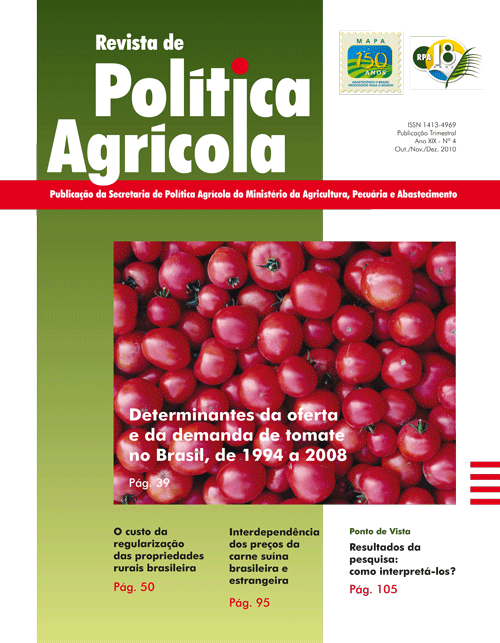Determinants of supply and demand of tomatoes in Brazil: 1994–2008
Keywords:
Agriculture, supply and demand model, substitute goodsAbstract
This paper analyses the tomatoes production in Brazil using a supply and demand model, considering the relation of the tomatoes prices with prices of its substitute goods and the Brazilian income between 1994 and 2008. Nowadays, Brazil is the sixtieth major world producer of tomatoes, producing 3 million tons a year in an area of 58 thousand hectares, with the State of São Paulo being responsible for 38% of the national production. The estimation of the supply and demand equations allows one not only to obtain the price-elasticity and levels of production, but it is an instrument of prediction and analysis to Brazilian producers. The results from the demand equation show that the price of tomatoes is an important variable to determine its consumption. The price of both potatoes and carrots shows a negative coefficient, characterizing them as complementary goods to tomatoes, while the positive coefficient related to lettuce denotes it as a substitute good. The income-elasticity, surprisingly, did not show a positive coefficient, allowing one to suppose that increases in income would provoke the substitution of tomatoes for other goods not included in this study.Downloads
How to Cite
Bertotti, G., & Massuquetti, A. (2015). Determinants of supply and demand of tomatoes in Brazil: 1994–2008. Revista De Política Agrícola, 19(4), 39–49. Retrieved from https://rpa.sede.embrapa.br/RPA/article/view/350
Issue
Section
Artigos Científicos


